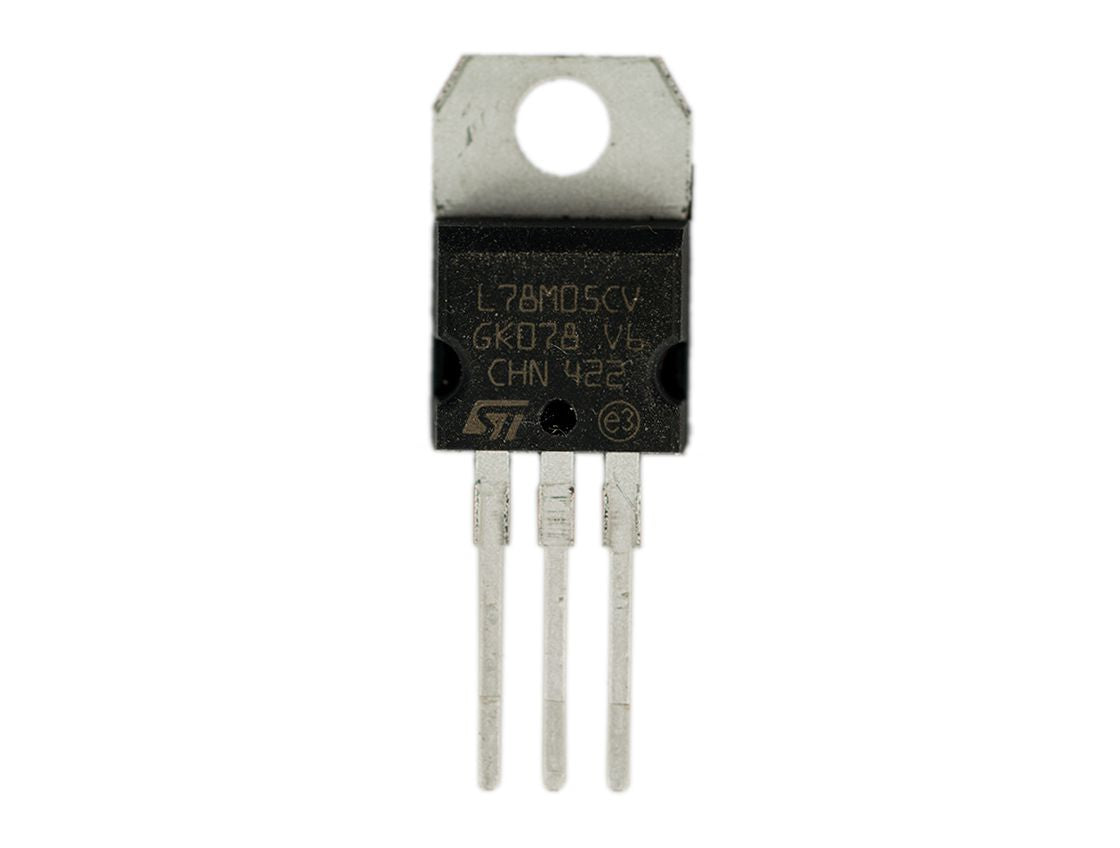
How to use Voltage Regulators in a Circuit
Introduction
In this tutorial we’re going to go through how to use a voltage regulator within a circuit!
Voltage regulators are designed to maintain and stabilise voltage levels. Regulators are found in most electronic devices, and can be used to step-down and control voltage outputs from a high voltage source, dissipating excess energy as heat. This is great for applications where you need multiple discrete voltages for different devices within a single circuit, as you can use voltage regulators to step-down from a single higher output source!

Most voltage regulators have 3 pins:
Input – This is the input voltage from the original source. For example a battery, or power supply. You feed the output of that device into the input of the regulator. The input should always be as clean as possible, and should always be larger than the required output voltage. Most voltage regulators have a minimum specified input voltage, so make sure you adhere to this (or the output may be lower than expected)
Ground – A common ground is required between the input and the output voltages. This should connect to the ground in the circuit, and is required for the regulator to function.
Output – The output pin spits out the regulated voltage.
How do I use voltage regulators in a circuit?
How voltage regulators work is a subject in itself, so we won't go through it in detail here. Suffice to say voltage regulators are essentially voltage dissipators that convert excess voltage into heat. A larger input voltage will result in a hotter voltage regulator as it works harder to get rid of that excess voltage, so users should be aware of this!
Your wall socket outputs AC, whereas most appliances are DC. One of the functions of a power supply is to drop down and convert this AC signal to DC, however there can be “noise” left on the line depending on the quality of the power supply used, and this can cause issues for voltage regulators.
If your regulator is situated more than 25cm (10 inches) away from the power supply you'll need to add capacitors to the input (0.33uf) and output (0.10uf) to filter any residual AC noise on the line. Voltage regulators work most efficiently when a clean DC signal is fed into it, and these bypass capacitor helps to reduce any AC ripple. Essentially, they act to short the AC noise of the voltage signal to ground, and filter only the DC voltage into the regulator.

These two capacitors are not necessarily required, and can be omitted if you aren't too concerned with how much line noise there is e.g. if you're adding a few LEDs with resistors. However, if you're building something like a mobile phone charger, or using the output for logic assessment, you'll want a nice clean DC line, so we would recommend including the capacitors!
The 0.33uF ceramic capacitor should be connected after the voltage source and before the input of the voltage regulator. The second capacitor, the 0.1uF ceramic capacitor should be connected after the voltage regulator output.

In the circuit above we have a 12V source, which we need to regulate to 5V in order to run our LED! GND in this circuit is simply the negative side of this 12V source.
The first 0.33uF capacitor shorts any AC noise on the line to ground and cleans the signal up for the input of our regulator. The regulator in this circuit is a TS7805CZ (5V 1A) regulator, which then steps the 12V voltage signal down to 5V, and pushes this on the output.
The 0.1uF capacitor then further cleans the DC signal, which leaves us with a nice clean 5V source. We can use to power any 5V devices, in this case an LED but you can attach any 5V device at this point!
There’s a few things to be aware of when using voltage regulators in a circuit:
- Always double check the “OUT” voltage with a multi-meter prior to connecting your circuit up. The last thing you want to do is blow up your 5V device by pushing a large voltage through it by mistake
- Most regulators have only 3 ports (IN/OUT/GND). If there’s more pins, make sure you know what they do, and if any extraneous components are required.
- Excess voltage is dissipated as heat by the regulator, so take care when designing and using circuits. If you’re stepping down a large voltage, more heat will be created by the regulator, and you may need a heat sink to ensure that your regulator doesn’t burn out. If it feels too hot it probably is too hot!





